
How to Use Type-c Power Bank Module: Examples, Pinouts, and Specs
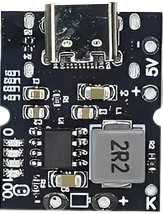
 Design with Type-c Power Bank Module in Cirkit Designer
Design with Type-c Power Bank Module in Cirkit DesignerIntroduction
The Type-C Power Bank Module is a versatile and portable power solution designed to charge a wide range of electronic devices via a USB Type-C connection. This module is commonly used in DIY power bank projects, providing a convenient way to store and distribute power to smartphones, tablets, and other USB-C compatible devices. Its compact design and ease of use make it a popular choice for hobbyists and professionals looking to create custom power solutions.
Explore Projects Built with Type-c Power Bank Module
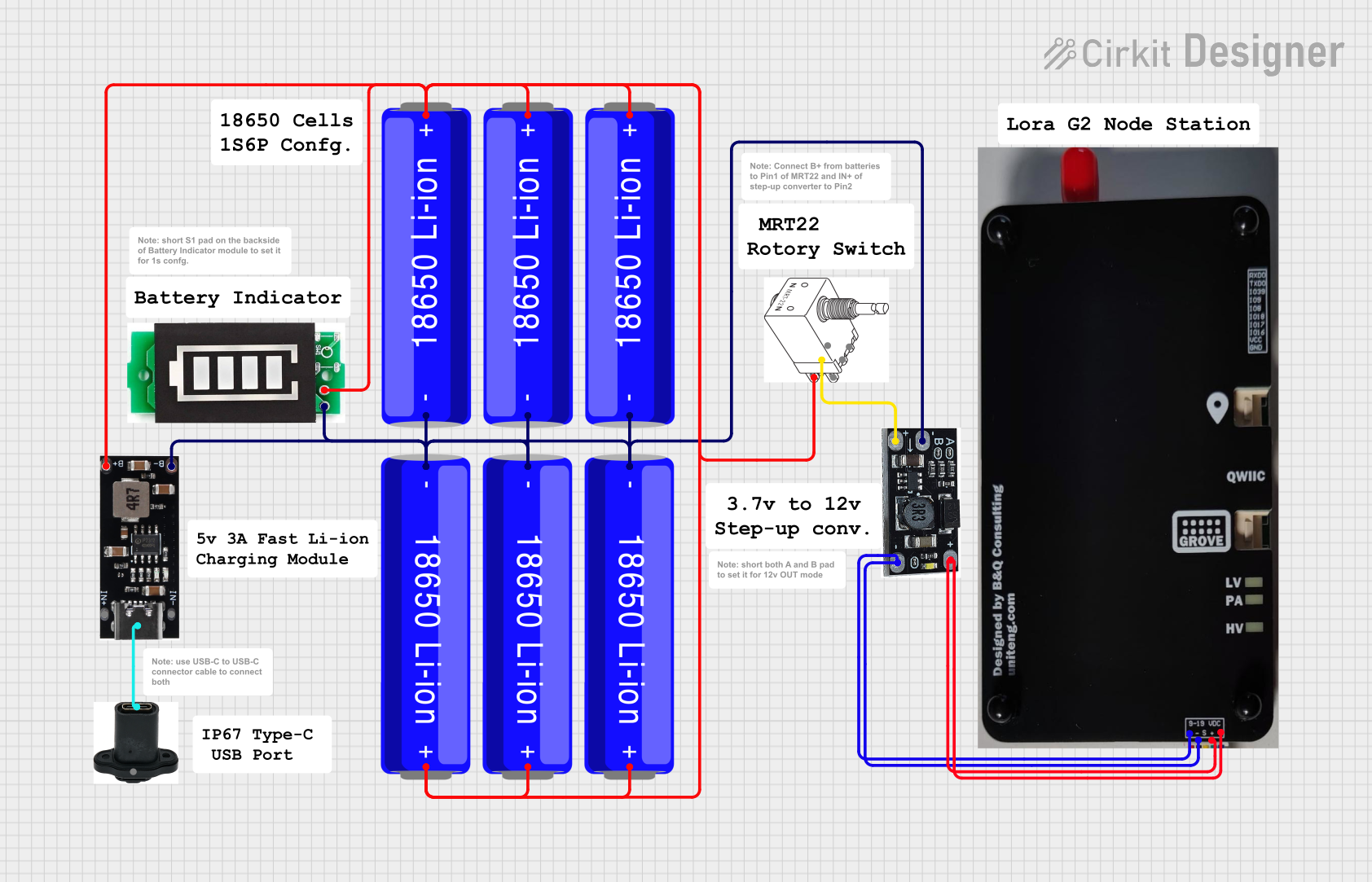
 Open Project in Cirkit Designer
Open Project in Cirkit Designer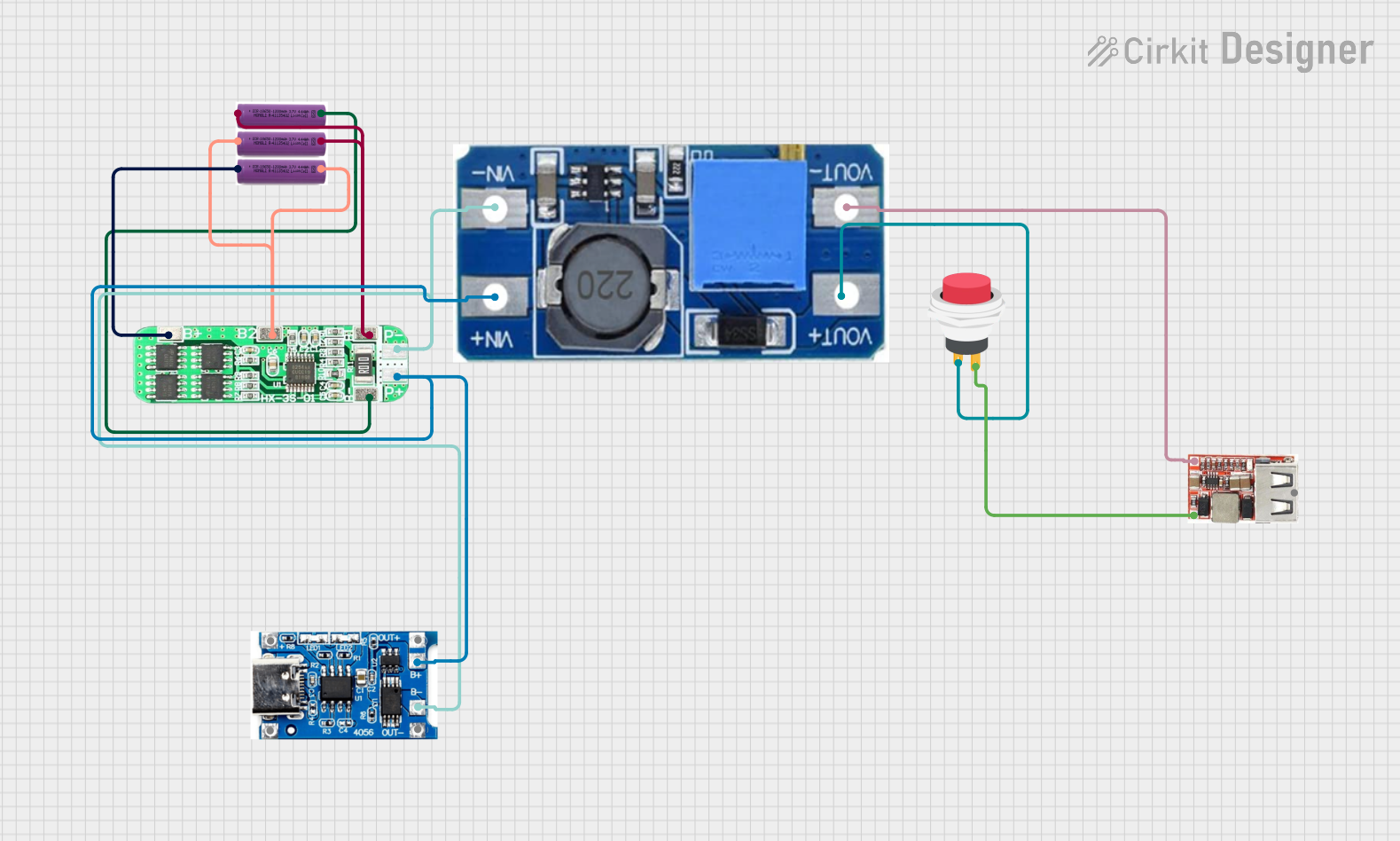
 Open Project in Cirkit Designer
Open Project in Cirkit Designer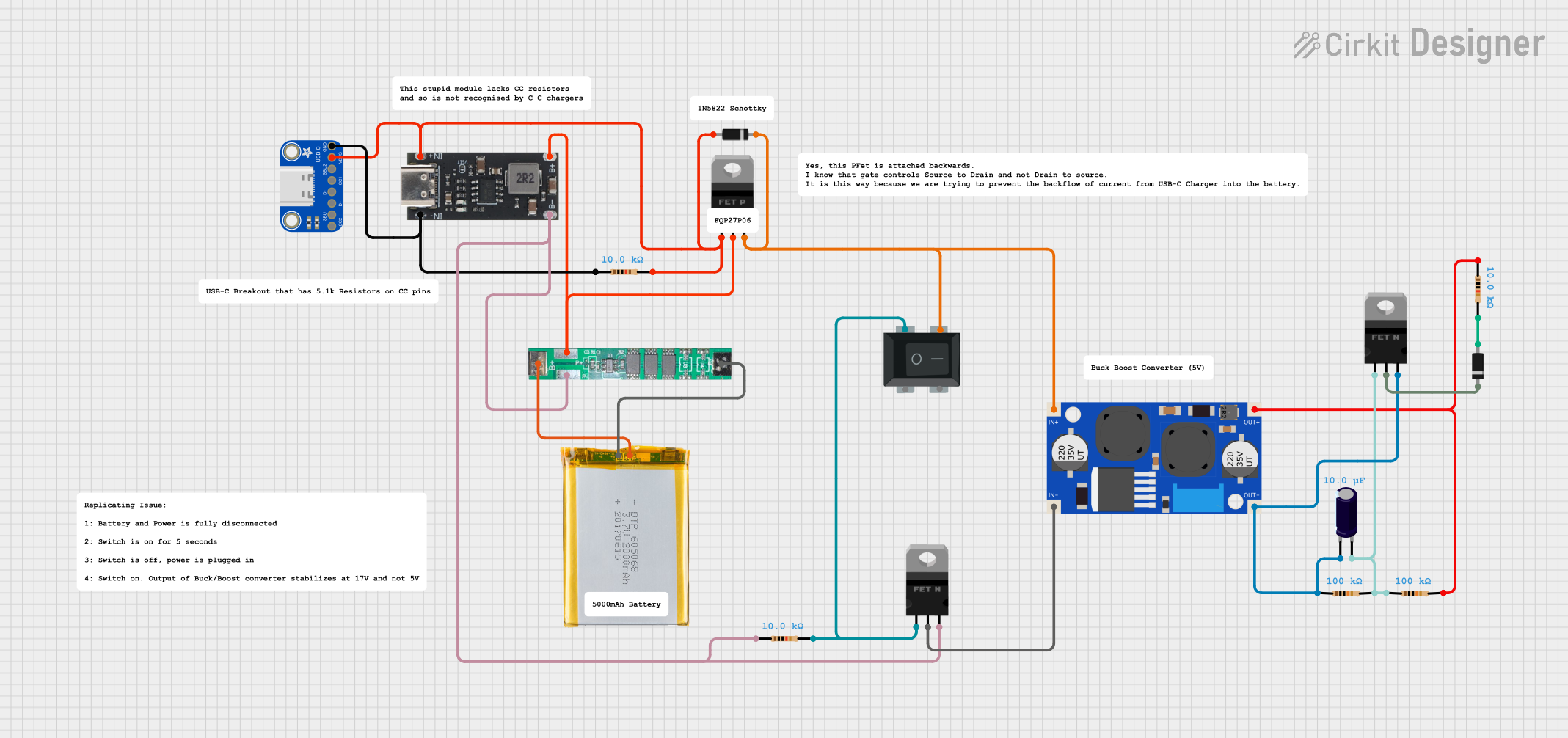
 Open Project in Cirkit Designer
Open Project in Cirkit Designer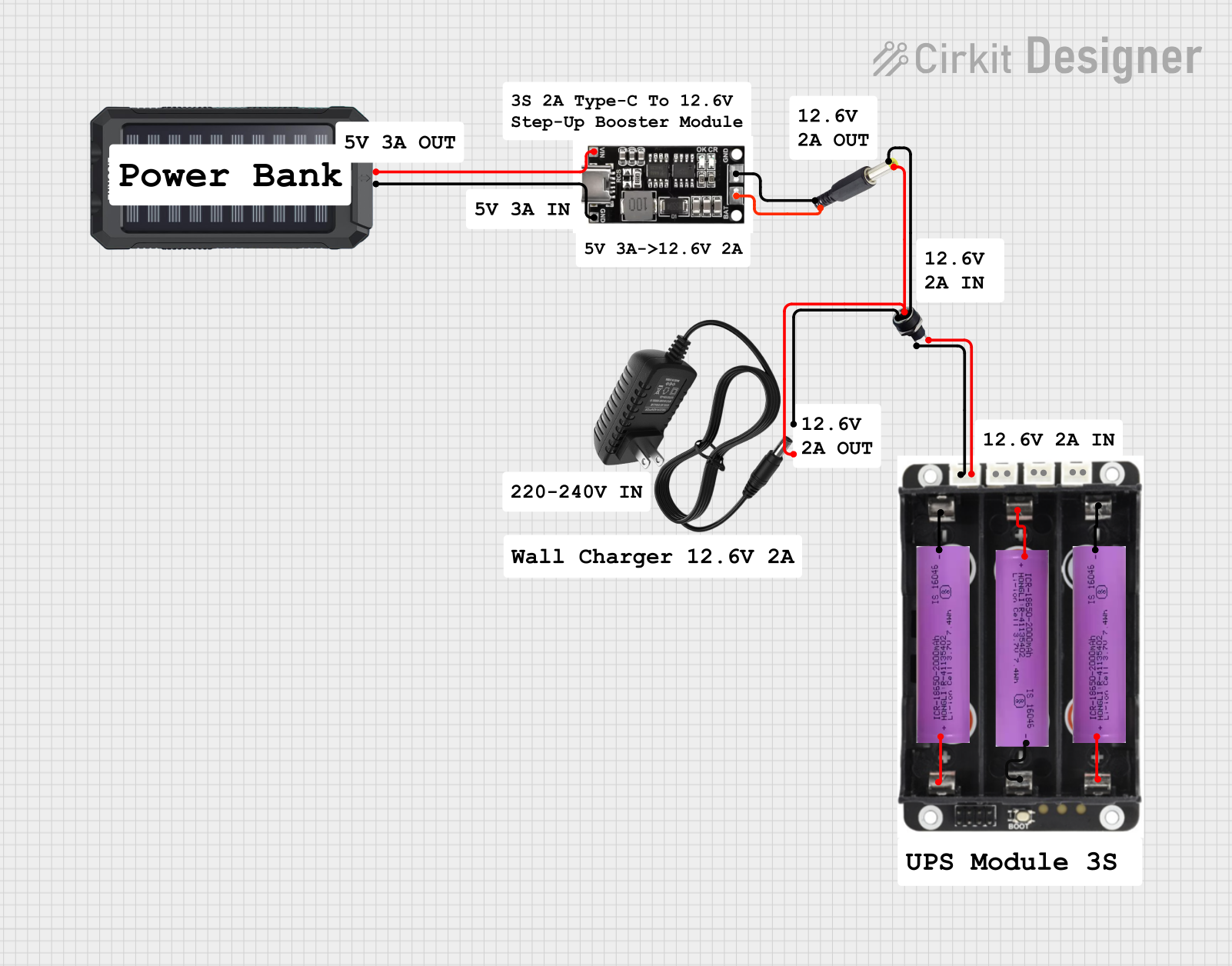
 Open Project in Cirkit Designer
Open Project in Cirkit DesignerExplore Projects Built with Type-c Power Bank Module

 Open Project in Cirkit Designer
Open Project in Cirkit Designer
 Open Project in Cirkit Designer
Open Project in Cirkit Designer
 Open Project in Cirkit Designer
Open Project in Cirkit Designer
 Open Project in Cirkit Designer
Open Project in Cirkit DesignerCommon Applications and Use Cases
- DIY portable chargers for smartphones and tablets
- Backup power supply for USB-C powered devices
- Power source for embedded projects and IoT devices
- Mobile power for camping and outdoor activities
Technical Specifications
Key Technical Details
- Input Voltage: Typically 5V to 12V via micro-USB or USB-C
- Output Voltage: 5V standard USB output, with some models supporting variable voltages
- Output Current: Varies by model, often up to 2A or 3A for USB-C
- Battery Compatibility: Usually designed for 18650 Li-ion batteries or similar
- Charging Circuitry: Integrated circuits for battery management and device protection
- Efficiency: Varies, but generally around 85-90%
Pin Configuration and Descriptions
| Pin Number | Description | Notes |
|---|---|---|
| 1 | USB-C VBUS (Power Input) | Connect to USB-C source for input |
| 2 | USB-C CC1/CC2 (Data Lines) | For device communication |
| 3 | Battery + (Positive Terminal) | Connect to battery positive |
| 4 | Battery - (Negative Terminal) | Connect to battery negative |
| 5 | USB-A Output + (Power Output) | Connect to device's USB-A cable |
| 6 | USB-A Output - (Ground) | Ground for USB-A output |
Usage Instructions
How to Use the Component in a Circuit
- Battery Installation: Insert the 18650 Li-ion battery or equivalent into the module, ensuring correct polarity.
- Charging the Module: Connect a USB-C cable from a power source to the module's input port to charge the battery.
- Powering Devices: Connect the device's USB-C or USB-A cable to the module's output port to start charging.
Important Considerations and Best Practices
- Battery Safety: Use only recommended battery types and capacities to prevent damage or hazards.
- Module Handling: Avoid physical damage to the module, as it contains sensitive electronic components.
- Heat Dissipation: Ensure adequate ventilation around the module to prevent overheating during operation.
- Overload Protection: Do not exceed the module's maximum current and voltage ratings to avoid overloading.
Troubleshooting and FAQs
Common Issues
- Module Not Charging: Ensure the input power source is active and the USB-C cable is properly connected.
- Device Not Charging: Check the output connections and ensure the connected device is USB-C compatible.
- Overheating: If the module becomes too hot, disconnect all power sources and allow it to cool down.
Solutions and Tips
- Proper Cable Use: Use high-quality cables with appropriate power ratings for both input and output.
- Battery Maintenance: Regularly check the battery condition and replace it if it shows signs of wear or damage.
- Firmware Updates: Some modules may have firmware that can be updated for improved performance or compatibility.
FAQs
Q: Can I use this module to charge laptops with USB-C? A: It depends on the power requirements of the laptop and the output capabilities of the module. Check both specifications.
Q: How many devices can I charge at once? A: This depends on the number of output ports and the total output current the module can provide.
Q: Is it possible to replace the battery? A: Yes, most modules are designed to allow the user to replace the battery when needed.
Example Arduino UNO Connection (Optional)
If you wish to monitor the power bank module's status using an Arduino UNO, you can connect the module's output to the Arduino and read the voltage level through an analog input. Here's a simple code snippet to get you started:
// Define the analog pin connected to the power bank module
const int powerBankPin = A0;
void setup() {
// Initialize serial communication at 9600 bits per second
Serial.begin(9600);
}
void loop() {
// Read the voltage level from the power bank module
int sensorValue = analogRead(powerBankPin);
// Convert the analog reading to voltage (assuming a 5V Arduino)
float voltage = sensorValue * (5.0 / 1023.0);
// Print out the voltage
Serial.println(voltage);
// Wait for a second before reading again
delay(1000);
}
Remember to add a voltage divider if the output voltage of the power bank module exceeds the maximum voltage rating of the Arduino's analog input pins.